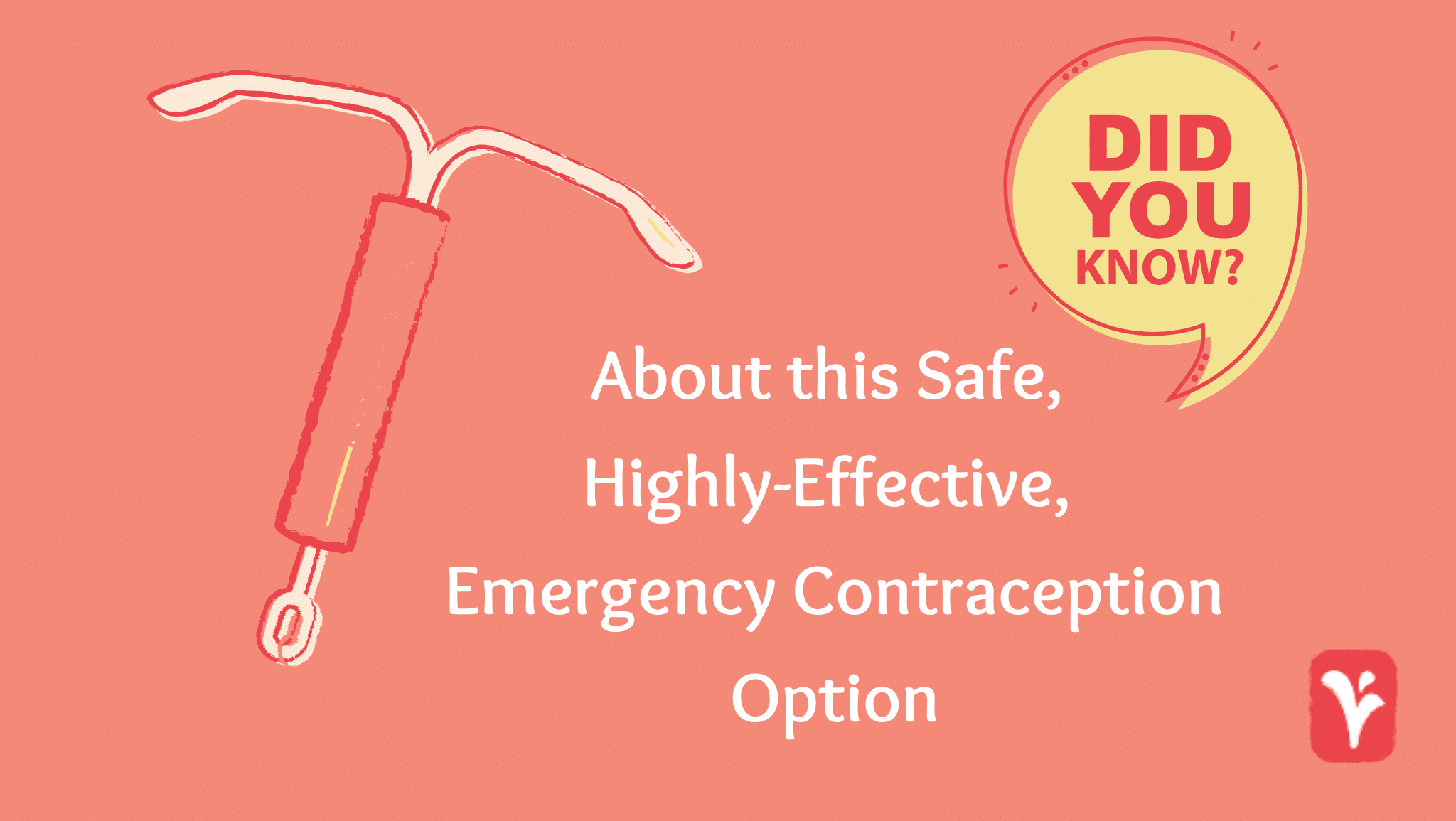At AWHC, we offer prompt appointments for IUD insertion. Copper IUDs for emergency contraception are effective 5-7 days after unprotected intercourse or five days after the earliest estimated day of ovulation. In the US, ParaGard is the only form of copper IUD available.
Over time, IUDs are also the most cost-effective form of birth control because they last up to 10 years. Most insurance plans cover copper IUDs and in addition, at AWHC, funding options are available!
Let’s lean more and see if this option may be a great one for your situation.
What is the Cooper IUD?
While many people typically think of the morning-after pill as the only emergency contraceptive option, the copper intrauterine device (IUD), also known by its brand name ParaGard, is even more effective at preventing an unwanted pregnancy.
Plan B, a brand of oral emergency contraception, AKA the morning-after pill, can be swallowed up to 72 hours after unprotected sex and can be obtained without a prescription. Another form of oral emergency contraception, ella, usually requires a prescription and can be taken up to 5 days after unprotected sex. Morning-after pills are effective depending on when they are taken.
RELATED: What Birth Control Is Best for Me?
The copper IUD is a tiny t-shaped device that is hormone-free. It’s a flexible piece of plastic that gets its name due to the copper coil wrapped around it. If you secure an appointment within the recommended 5-day deadline after unprotected sex, it’s the most effective form of emergency contraception and is even more effective than oral emergency contraceptives.
Just how effective are copper IUDs for emergency contraceptives, though? A systematic review of 42 studies reported a pregnancy rate of 0.09% with copper IUDs, which is ten times more efficacious than oral emergency contraceptive options.
Who might a copper IUD be for?
Almost anyone is eligible for the use of a copper IUD. There’s also no age requirement, so it is even a safe option for teenagers. After a medical history, if a provider says that you’re allowed to have a copper IUD, you’re eligible.
The IUD can last up to 10 years, making it a good choice for those who want long-lasting birth control. There is no need to remember to take a pill every day. While oral emergency contraceptives are effective at preventing pregnancy when used correctly, the copper IUD can help circumvent concerns over unintended pregnancies in the future. This means you can receive the copper IUD for emergency contraception and continue to use it for years as a contraceptive method.
RELATED: Everything You Need to Know About Long Acting Reversible Contraceptives (LARC)
Another benefit is that, unlike Plan B, copper IUDs have no weight limits. Both ella and Plan B have weight limits and may work less effectively or fail if taken over the weight criteria. The weight limit for Plan B is 165 pounds, and the weight limit for ella is 195 pounds. ParaGard works for all weight ranges.
People may opt for copper IUD placement as emergency contraception if a contraceptive method fails, such as a condom breaking or slipping, if birth control is forgotten, or in the case of sexual assault.
Copper IUDs are effective because they are toxic to sperm cells and stop them from moving to meet an egg, preventing fertilization.
IUDs and oral emergency contraceptives do not protect against sexually transmitted infections (STIs), so it is recommended to use a barrier method such as condoms for protection from STIs during intercourse.
What to know about copper IUD insertion at AWHC
The copper IUD is extremely safe. Minor pain with insertion is normal, and a provider might recommend taking an over-the-counter pain reliever before your appointment. During insertion, a provider will insert a speculum in the vagina and use a special inserter to place the IUD in the opening of the cervix, inside the uterus. The process usually takes less than five minutes.
After insertion, most people feel fine. However, some might experience cramping, dizziness, or backaches. Resting after IUD insertion is recommended. Serious problems are rare.
You’ll want to note the date a provider inserted your IUD so you’ll know when to have it replaced. If at any point you wish to have your IUD removed to become pregnant or for another reason, you can choose to have your IUD taken out. Removal is simple and quick.
Do other IUDs work as emergency contraceptives?
There are two types of IUD options, hormonal and non-hormonal, such as the copper IUD. According to Planned Parenthood, the Mirena and Liletta IUDs, which are hormonal IUDs, work as emergency contraception in addition to ParaGard. Instead of copper, these IUDs use the hormone progestin to prevent pregnancy. However, most clinicians will opt for ParaGard because there isn’t as much data on other IUDs strictly for emergency contraception purposes. One small study with 335 participants found that the levonorgestrel IUD was “non-inferior” to the copper IUD for emergency contraception, meaning it was no worse.
The copper IUD is one of the most commonly used forms of contraception. It also has a remarkably low failure rate, making it a widely used choice for emergency contraception.
Despite awareness of the morning-after pill, many people are unaware of the IUD as an emergency contraceptive option that is effective, safe, and works regardless of weight. People may opt for this choice to save on cost over time, to not have to think about taking birth control every day, and because they want a more reliable birth control plan. If you are interested in an IUD for emergency contraception, one of our providers would be happy to answer your questions.
